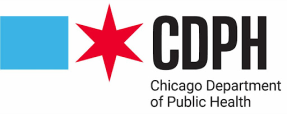Violence Prevention Basics


Violence Prevention Basics
SOVP works to prevent violence across the lifespan and reduce its negative impacts when it does occur. We understand violence to be anything that hurts or destroys any person, place or thing. We believe that exposure to violence in the home and/or community can change the life of a child forever, "Children See...Children Do".
Violence brings only temporary victories. Violence, by creating many more social problems than it solves, never brings permanent peace.
– Dr. Martin Luther King, Jr.
Improving Health By Promoting Peace
We believe in primary prevention: preventing violence from happening in the first place by increasing awareness, identifying alternatives, responding early, surrounding children with protection, building on strengths, supporting parents and caregivers, strengthening community connections and working towards a culture of peace and justice.
Define and Monitor the Problem
The first step in preventing violence is to understand the “who”, “what”, “when”, “where” and “how” associated with it. Data can demonstrate how frequently violence occurs, where it is occurs, trends, and who the victims and perpetrators are. These data can be obtained from police reports, medical examiner files, vital records, hospital charts, registries, population-based surveys, and other sources.
Identify Risk and Protective Factors
It is not enough to know the magnitude of a public health problem. It is important to understand what factors protect people or put them at risk for experiencing or perpetrating violence. Why are risk and protective factors useful? They help identify where prevention efforts need to be focused.
Risk factors do not cause violence. The presence of a risk factor does not mean that a person will always experience violence. Victims are never responsible for the harm inflicted upon them.
- Risk Factor: Characteristic that increases the likelihood of a person becoming a victim or perpetrator of violence.
- Protective Factor: Characteristic that decreases the likelihood of a person becoming a victim or perpetrator of violence or provides a buffer against risk.
Develop and Test Prevention Strategies
Findings from the research literature and data from needs assessments, community surveys, stakeholder interviews, and focus groups are useful for designing prevention strategies for evidence-based approach to program planning. Once prevention strategies are implemented, they are evaluated rigorously to determine their effectiveness.
Assure Widespread Adoption
The strategies shown to be effective in Step 3 are then implemented and adopted more broadly. Communities are encouraged to implement strategies based on the best available evidence and to continuously assess whether the strategy is a good fit with the community context and achieving its goal of preventing violence. Dissemination techniques to promote widespread adoption include training, networking, technical assistance, and evaluation.
source: https://www.cdc.gov/violenceprevention/publichealthissue/publichealthapproach.html





